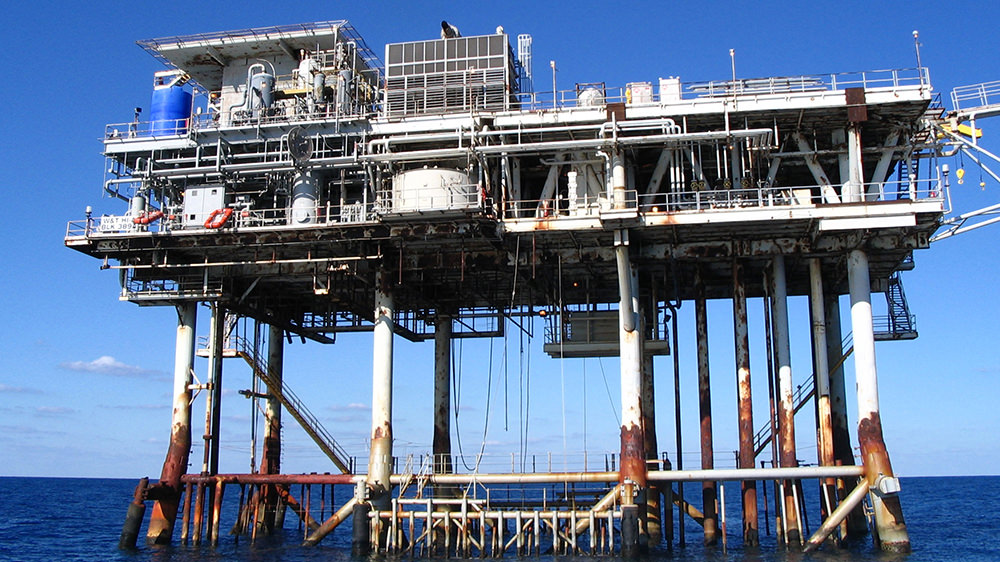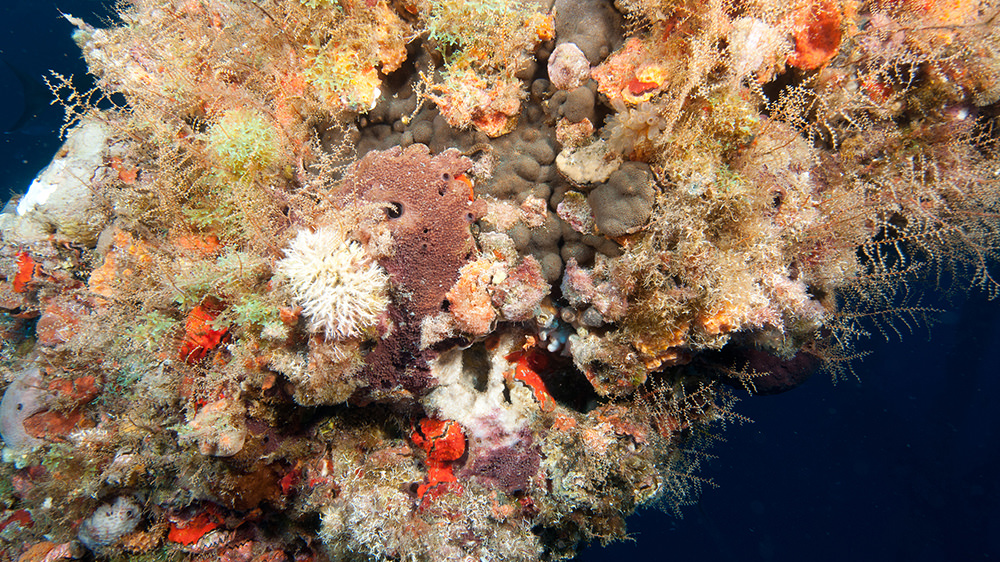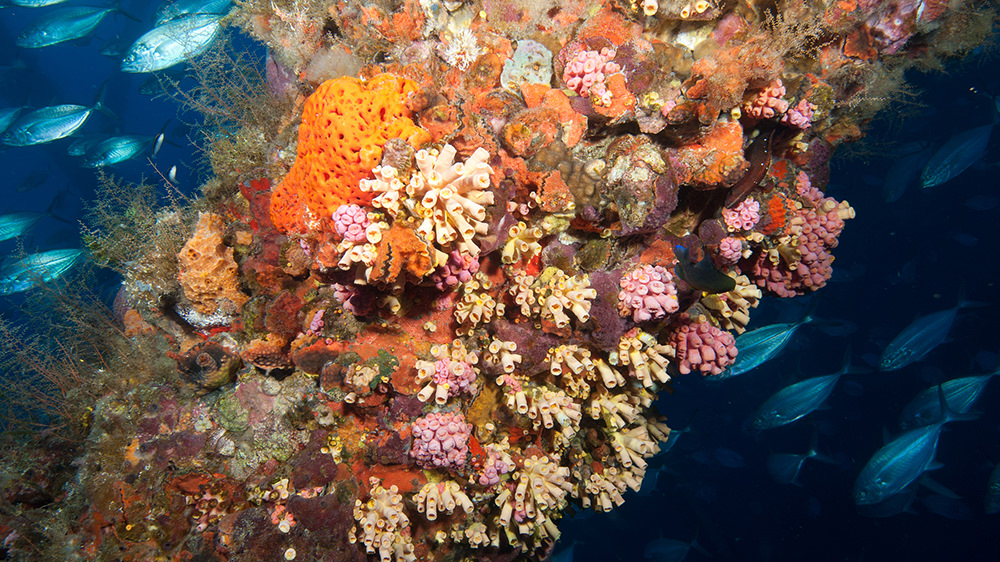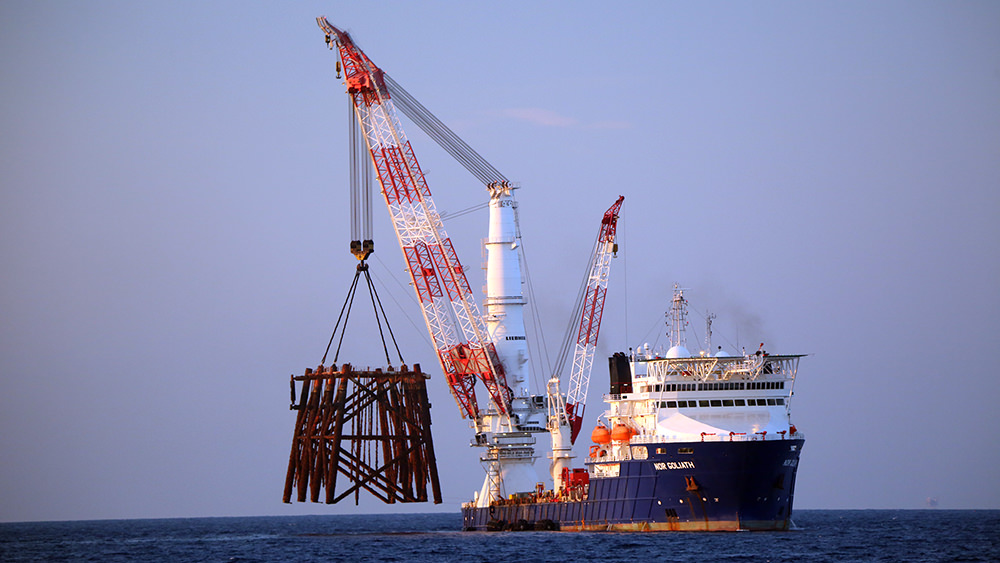
HI-A-389-A, an eight-leg production platform, was installed by Mobil Exploration and Producing U.S. Inc. (Mobil) in 1981 at a location just outside the designated No Activity Zone for oil and gas production at the southeast corner of East Flower Garden Bank. This location is about one mile from the coral reef cap.
In 1992, when Flower Garden Banks National Marine Sanctuary was designated, sanctuary boundaries were drawn using the outer edges of the No Activity Zone and incidentally enclosed the platform inside sanctuary boundaries.

In 2002, the HI-A-389-A platform was acquired by W&T Offshore, Inc, which continued to produce from the platform until 2012.

Since installation, a variety of encrusting organisms have colonized the underwater structure of the platform, forming a distinct benthic community that attracts abundant fish life and other marine organisms. The platform has also become a popular destination for scuba divers and fishers.

Unfortunately, invasive species have also made the platform their home. This includes the occasional Lionfish along with large quantities of Orange Cup Coral (Tubastraea sp.), the dominant coral species on the structure. More recently, the exotic Regal Demoiselle, a small fish species, has also been documented here.

The ultimate fate of this platform has been the subject of considerable discussion since its installation in 1981.The original lease issued by the U.S. Department of the Interior, Minerals Management Service (now BOEM) required the removal of the platform at the end of its productive life. However, as the time for decommissioning of the platform drew nearer, more in-depth reviews and public discussion took place.
In March 2013, the Artificial Reef Working Group of the Sanctuary Advisory Council recommended partial removal of the platform, leaving the lower portion standing for fishing and diving activity. The council accepted this recommendation at its May 2013 meeting.
Divers have enjoyed diving under this platform for many years because of the abundance of life that can be found here (Video Description). Credit: Emma Hickerson/FGBNMS
In 2014, W&T Offshore, Inc. initiated negotiations for the platform to be established as an artificial reef as part of the Texas Parks & Wildlife (TPWD) Rigs-To-Reefs program. This would involve removal of the deck and the top portion of the platform to a minimum depth of 65 feet below the surface, with the remainder of the structure left in place as an artificial reef. The artificial reef will be held under the liability of TPWD. Liability for the permanently plugged and abandoned pipelines and wells will remain with W&T Offshore, Inc.
Significant interest by the public and the Sanctuary Advisory Council led to the sanctuary's willingness to accept this decommissioned platform within the sanctuary's boundaries. Removal of the top portion of the platform and the deck (where oil production occurs) was completed on July 25, 2018. These materials were taken to shore for recycling or reuse.


